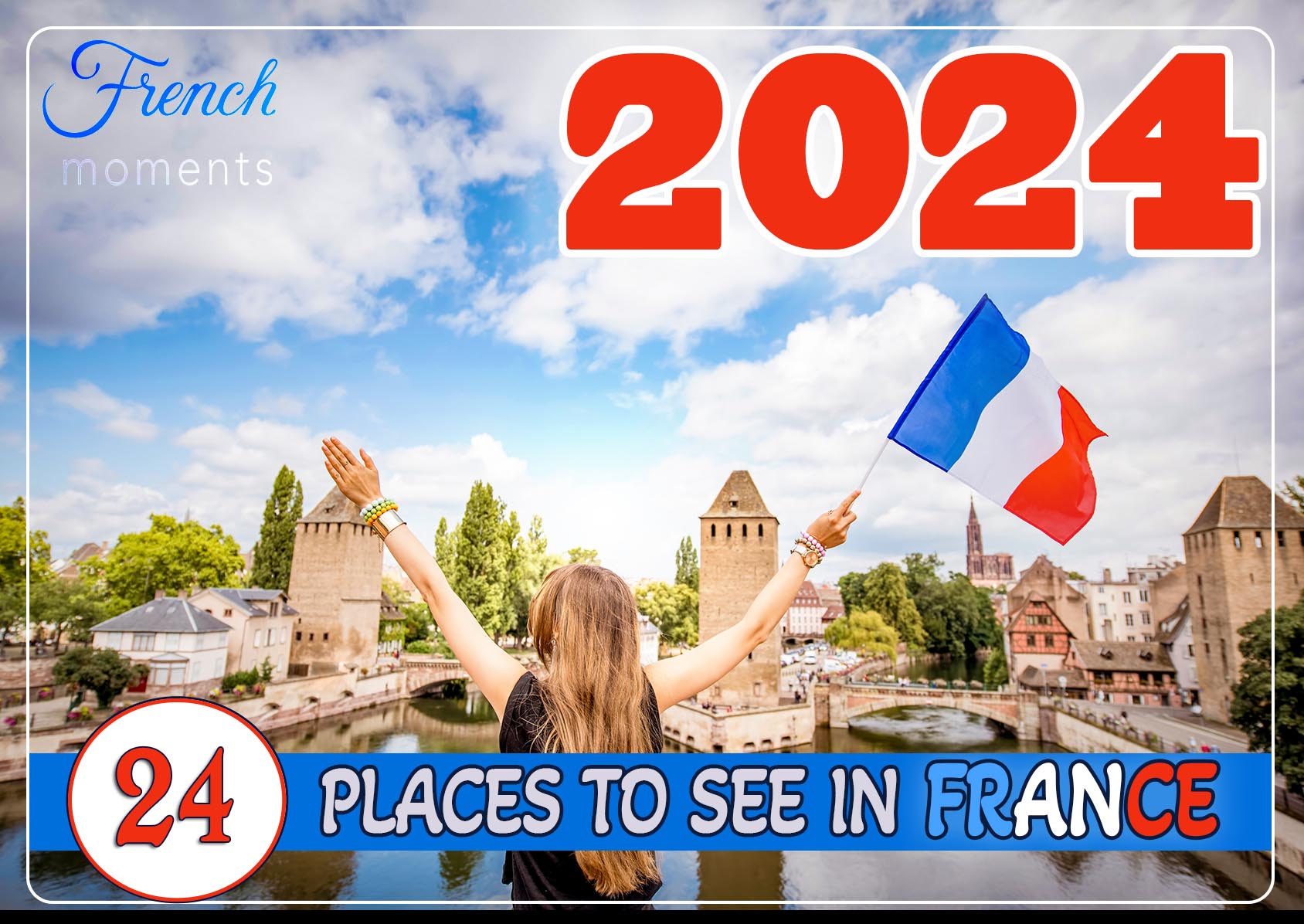The Tour de France is the world’s most famous bicycle race whose first edition was first organised in 1903. The event is a multiple-stage race held each year in France, with occasional stages in nearby countries. In July the whole country of France vibrates to the beat of the race, with its share of history and tradition. For all, the ‘Grande Boucle’ is synonymous with endurance and true sportsmanship.
A bit of history

The first edition of the Tour de France was organised in 1903 by Henri Desgrange and Géo Lefèvre to boost the sales for the sponsoring magazine L’Auto.
The race in the early 20th century was rather different from that of today: riders ran up to 400 km each day, finishing late at night without any support crews.
Many of the roads leading to the mountain passes were not even paved and it was the riders’ responsibility to carry their own tools and fix their bicycles if needed.
Similar to the Giro d’Italia and Vuelta a España, the bicycle race is the oldest and most prestigious of its kind.
It has crossed France each year since, except during the First and Second World Wars.
Today, the race is organised by the Amaury Sport Organisation.
To welcome a stage start or finish of the race brings prestige and generates financial benefits to the hosting town.
Format of the Tour de France
Although the race originally ran around the perimeter of France, it is nowadays divided into stages whose itineraries are discontinuous.
The distance varies year to year but is usually about 3,500 km long (2,200 miles) with each day’s stage lasting up to five and a half hours and covering up to 225 km.
The Advertising Caravan
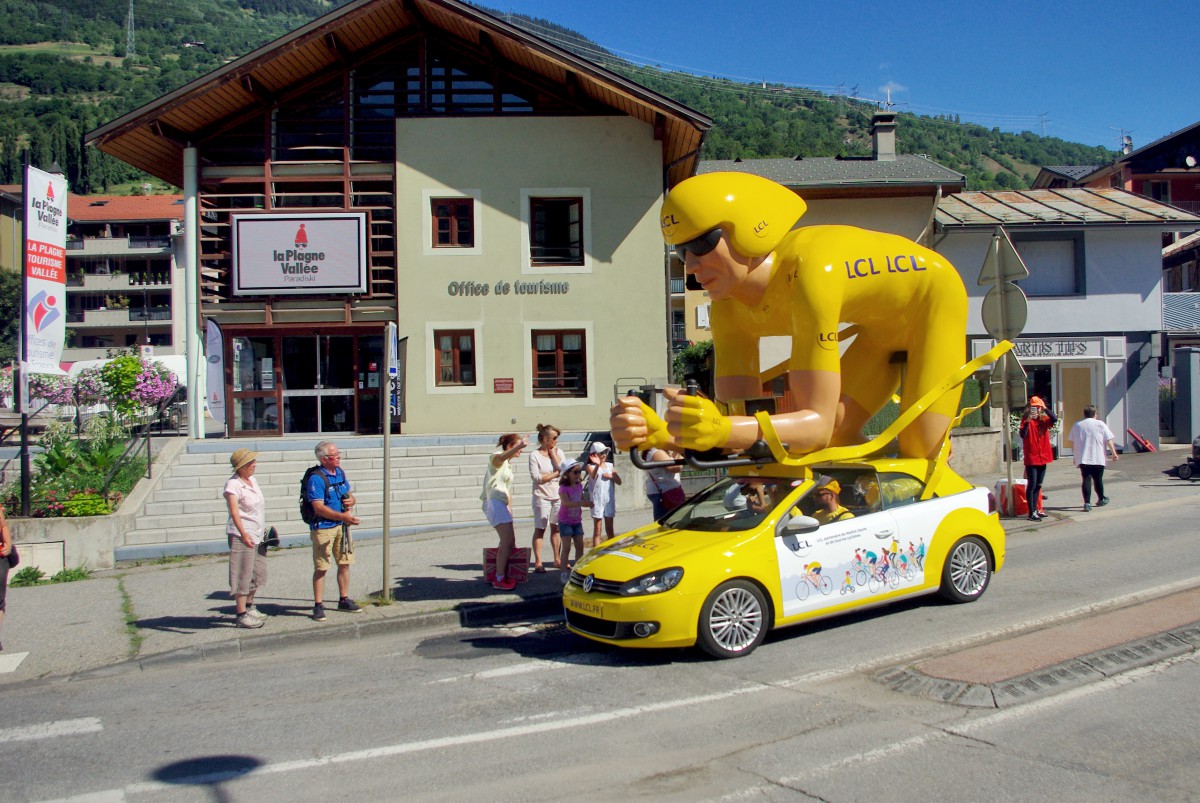
The advertising caravan precedes the cyclists along the route. Set like a procession, the colourful and decorated trucks and cars distribute goodies and souvenir items (candy, cheese, keychains, hats…) to the crowd gathered along the route.
Types of Stages
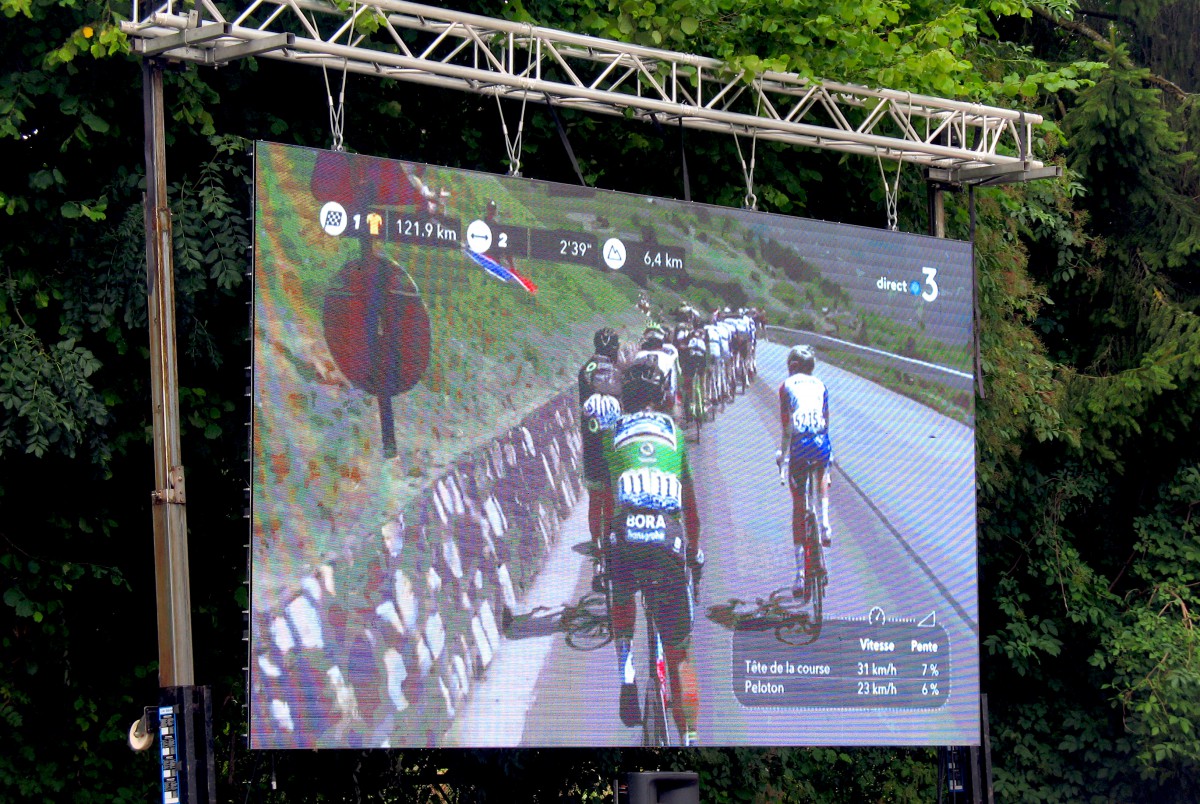
There are three main types of stages in the Tour de France:
- Mass-start stages: riders start together at the signal of the Tour director waving a white flag.
- Individual time trials: riders compete individually against the clock in a time trial.
- Team time trial: each team rides alone in a race against the clock.
The winner’s goal
![Tour de France 2013 at Aix-en-Provence © Georges Seguin - licence [CC BY-SA 3.0] from Wikimedia Commons](https://frenchmoments.eu/wp-content/uploads/2014/05/Tour-de-France-2013-at-Aix-en-Provence-©-Georges-Seguin-licence-CC-BY-SA-3.0-from-Wikimedia-Commons.jpg)
The objective of the Tour de France is to finish the race with the lowest accumulated time.
The leader of each stage of the race has the privilege of wearing the yellow jersey, or ‘maillot jaune’. The first winner to wear it was Eugène Christophe in 1919.
The rider who has worn the yellow jersey for the longest time was Eddy Merckx (96 stages).
Broadcasting the Tour de France
![Mont Saint Michel Tour de France © Jejecam - licence [CC BY-SA 3.0] from Wikimedia Commons](https://frenchmoments.eu/wp-content/uploads/2014/05/Mont-Saint-Michel-Tour-de-France-©-Jejecam-licence-CC-BY-SA-3.0-from-Wikimedia-Commons.jpg)
French TV channels France 2 and France 3 hold domestic rights and provide pictures for broadcasters around the world with the help of 300 staff members, four helicopters, two aircraft, two motorcycles, 35 other vehicles, and 20 podium cameras.
The Tour de France is massively followed by millions of viewers throughout the world. It is one of the most prestigious and watched sporting events, and the race provides France with a formidable promotional campaign for tourism…
Viewing the Tour
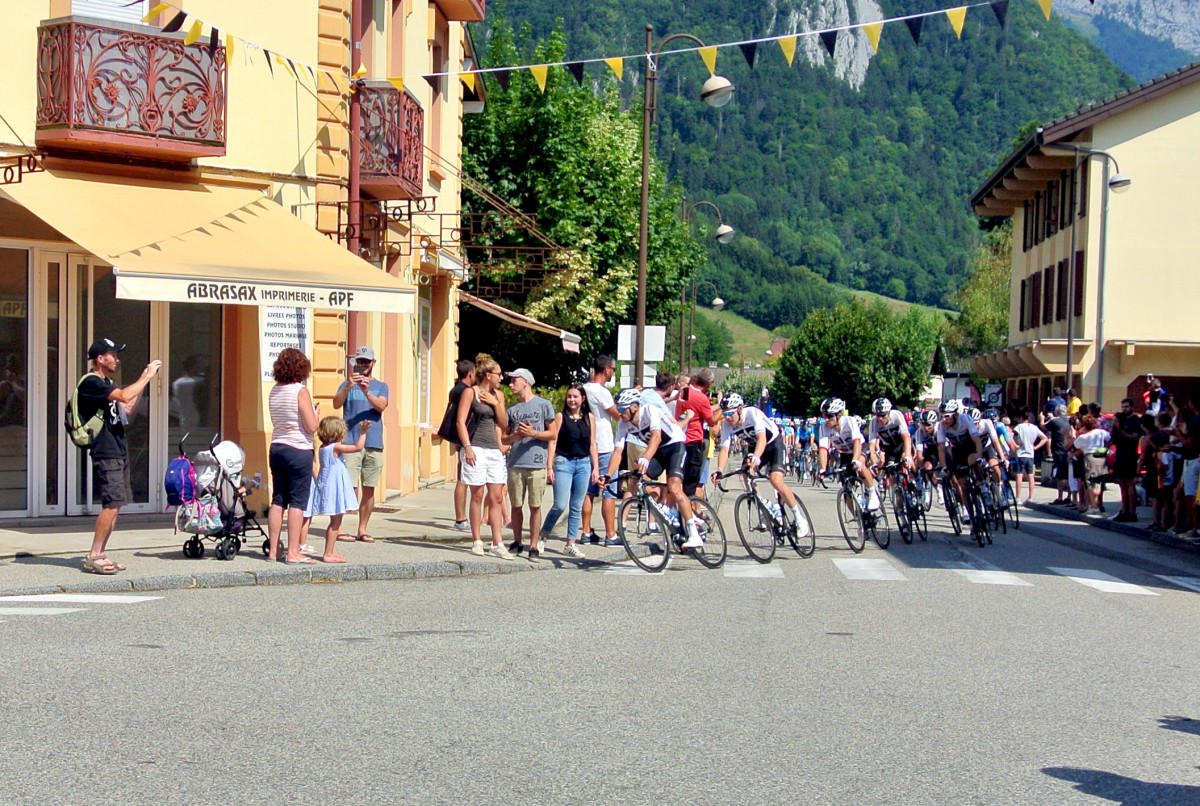
The Tour de France is a popular sporting event for the French and visitors alike simply because it is free!
Many spectators would camp out a whole week along the race’s itinerary to secure the best view of the race.
People set up picnics along the route, bringing with them transistor radios to keep up with the riders’ positions.
The atmosphere can be warm and friendly, and attending the race on the roadsides can be a great opportunity to make new friends.
The Tour de France Jerseys
![Pierre Rolland at Tour de France 2013 © Marianne Casamance - licence [CC BY-SA 3.0] from Wikimedia Commons](https://frenchmoments.eu/wp-content/uploads/2014/05/Pierre-Rolland-at-Tour-de-France-2013-©-Marianne-Casamance-licence-CC-BY-SA-3.0-from-Wikimedia-Commons.jpg)
The Yellow Jersey (Maillot Jaune) is worn by the overall race leader of the stage day. It was first introduced by the magazine L’Auto, which organized the first editions of the race. Since then, yellow has become the iconic colour of the Tour de France.
The rider who accumulates the most points each day wears the Green Jersey (Maillot Vert).
The Polka-Dot Jersey (Maillot à Pois Rouges) is worn by the rider who obtains the highest number of climbing points. The rider is also called “King of the Mountains”.
The White Jersey (Maillot Blanc), is worn by the best-placed overall rider under the age of 25 each day, also called “Best Young Rider”.
Traditions of the Tour de France
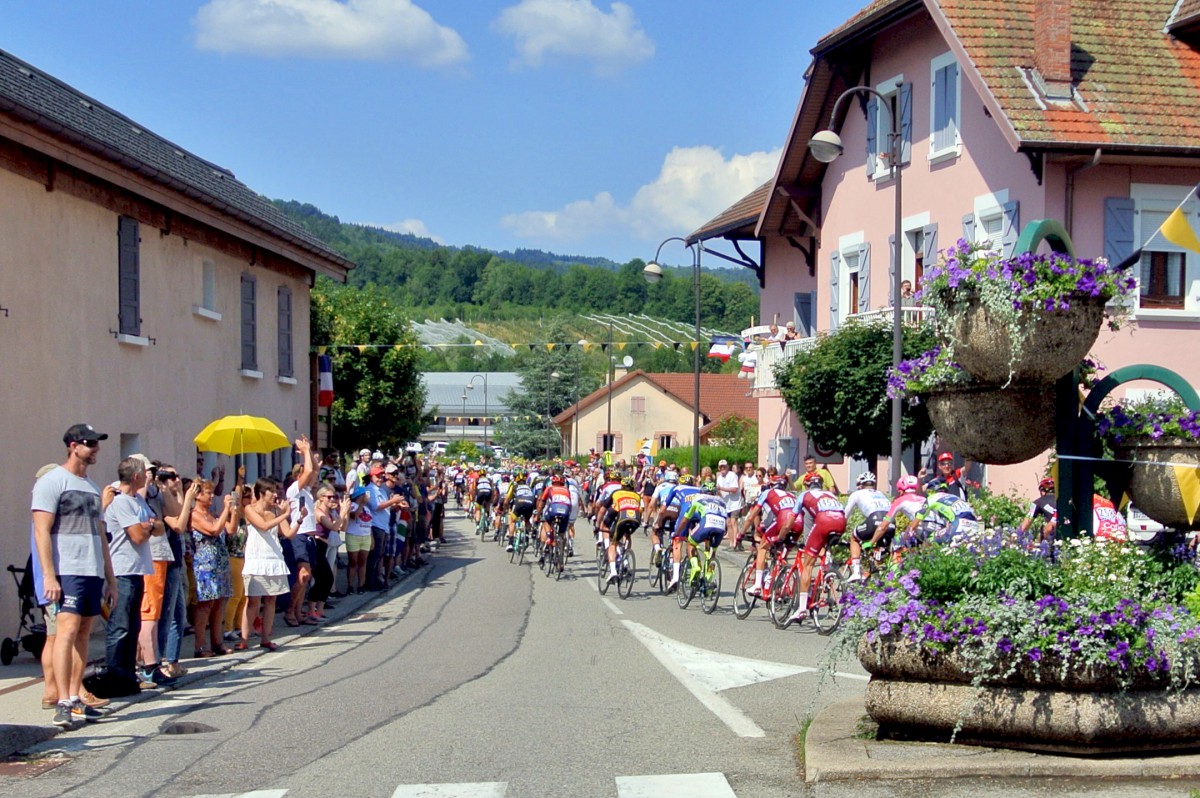
Each year, the Tour de France respects a few traditions:
- The bicycle race takes place in July for three weeks and includes around 21 stages.
- The colourful and decorated advertising caravan always precedes the cyclists, throwing samples to the crowd.
- The route changes every year, but some stages are quite predictable, such as the crossing of France’s two highest mountain chains: the Alps and the Pyrenees.
- The Tour’s famous climbs in the Alps include L’Alpe d’Huez with 21 hairpin bends, Mont Ventoux, Col du Tourmalet and Col du Galibier.
- The bicycle race often visits neighbouring countries such as England, Belgium, Germany, Switzerland, Italy, and Spain.
- Since 1975, the finish line has been at the Champs-Élysées in Paris. The last and final stage includes several back-and-forth circuits of the Avenue des Champs-Élysées. 2024 was an exception to the rule, with the Summer Olympics being held in Paris. The end of the race took place in Nice.
- The race leader wears the yellow jersey or maillot jaune and is given a bunch of flowers and a puffy lion at the podium (from the bank Le Crédit Lyonnais, for Lyon = lion!).
The Winners of the Tour de France
![Cadel Evans 5th stage of Tour de France 2011 © Thortuck - licence [CC BY-SA 3.0] from Wikimedia Commons](https://frenchmoments.eu/wp-content/uploads/2014/05/Cadel-Evans-5th-stage-of-Tour-de-France-2011-©-Thortuck-licence-CC-BY-SA-3.0-from-Wikimedia-Commons.jpg)
Tour de France winners
2017, 2016 and 2015: Christopher Froome (UK).
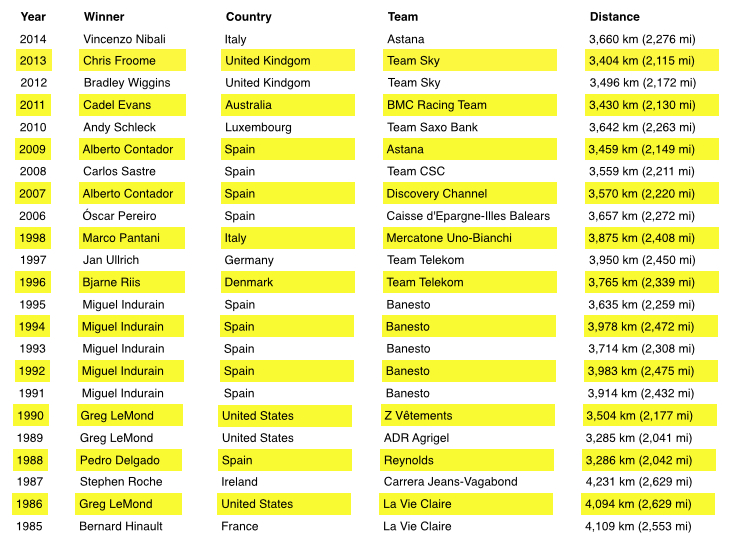
Between 1999 and 2005, Lance Armstrong was the winner of seven consecutive Tour de France. In October 2012, the Union Cycliste Internationale (UCI) stripped the American rider of all his titles after it emerged that he had used performance-enhancing drugs.
Multiple winners of the Tour de France
Four riders have won five times:
- Jacques Anquetil (FRA) in 1957, 1961, 1962, 1963 and 1964;
- Eddy Merckx (BEL) in 1969, 1970, 1971, 1972 and 1974;
- Bernard Hinault (FRA) in 1978, 1979, 1981, 1982 and 1985;
- Miguel Indurain (ESP) in 1991, 1992, 1993, 1994 and 1995 (record five consecutive wins).
One rider has won four times:
- Christopher Froome (ENG) in 2013, 2015, 2016 and 2017
Three riders have won three times:
- Philippe Thys (BEL) in 1913, 1914, and 1920;
- Louison Bobet (FRA) in 1953, 1954, and 1955;
- Greg LeMond (USA) in 1986, 1989, and 1990
Editions of the Tour de France
The route of the Tour de France changes each year.
Route of the 111th edition of the Tour de France – 2024
The 2024 Tour de France is the 111th edition of the race, taking place from 29 June to 21 July 2024.
This year, there are two major changes due to the Paris Olympics, held from 26 July to 11 August 2024.
The race starts earlier on 29 June, and for the first time, the final stage will not finish in Paris. Instead, it will end in Nice.
Additionally, the Grand Départ will take place in Florence, Italy, marking the 100th anniversary of Ottavio Bottecchia’s first Italian victory in the Tour de France in 1924.
![Tour de France 2024 by Andrei loas - licence [CC BY 4.0] from Wikimedia Commons](https://frenchmoments.eu/wp-content/uploads/2014/05/Tour-de-France-2024-by-Andrei-loas-licence-CC-BY-4.0-from-Wikimedia-Commons.jpg)
Route of the 105th edition of the Tour de France – 2019
The 106th edition of the Tour de France started in Brussels and finished on the Champs-Élysées in Paris.
It crisscrossed the East of France (Champagne, Lorraine, Alsace, Franche-Comté, Bourgogne, Savoie, Provençal Alps) with incursions in the Massif-Central, the Pyrenees and the Languedoc.
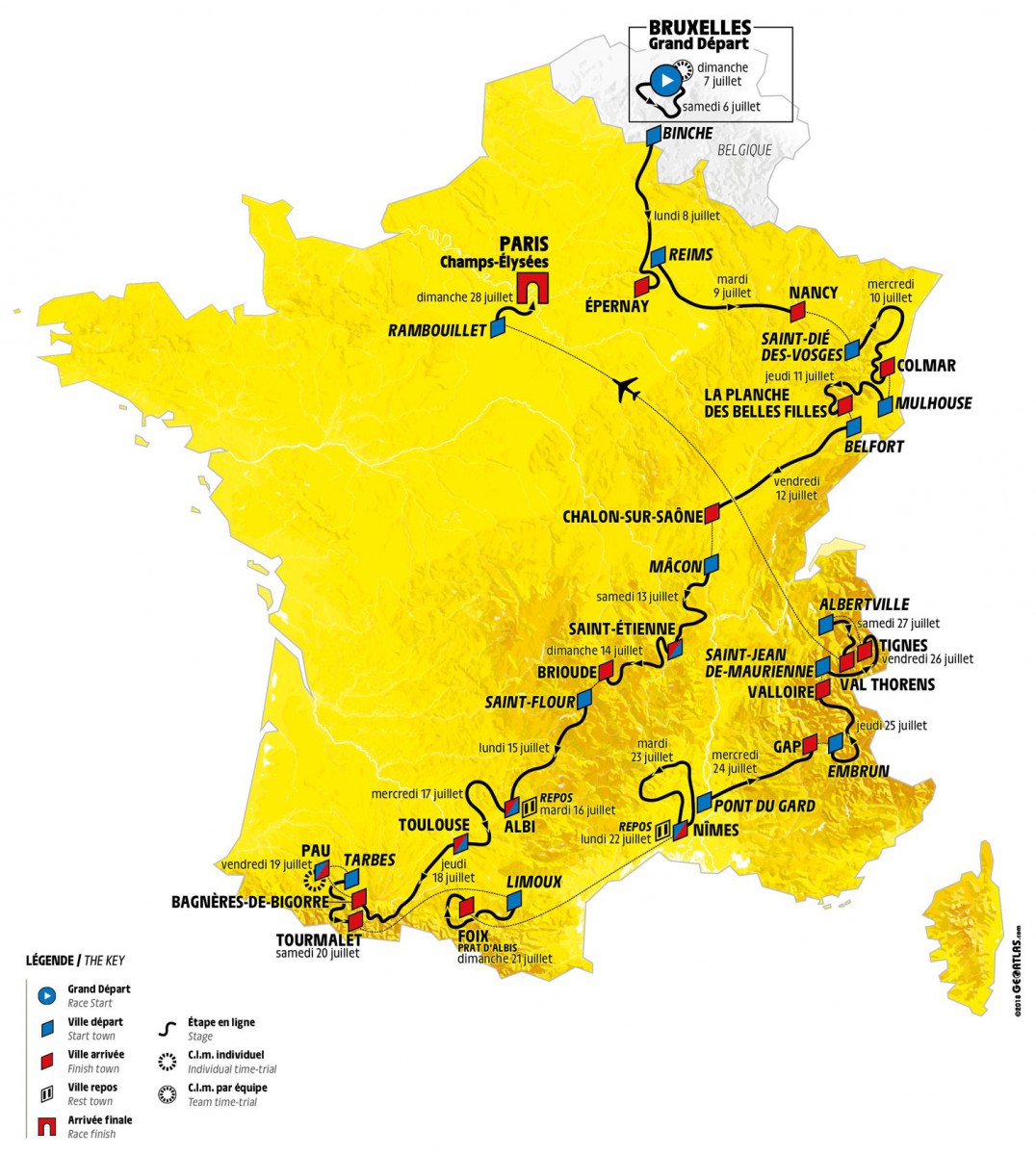
Route of the 105th edition of the Tour de France – 2018
The 105th edition of the Tour de France is interesting for one thing: the itinerary was 100% in France. It didn’t venture into neighbouring countries as has been the case for previous years. The race alternated plain and mountain stages… including the epic bends of L’Alpe d’Huez in the French Alps.
The race crossed the beautiful landscapes of Brittany and the Hauts-de-France. The riders endured the Northern French Alps (Savoy and Dauphiné) and the Massif Central. Carcassonne made the link to the rest of the race across the Pyrenees. The grand final took place on 29 July from Houilles (Yvelines) to the Champs-Elysées in Paris.
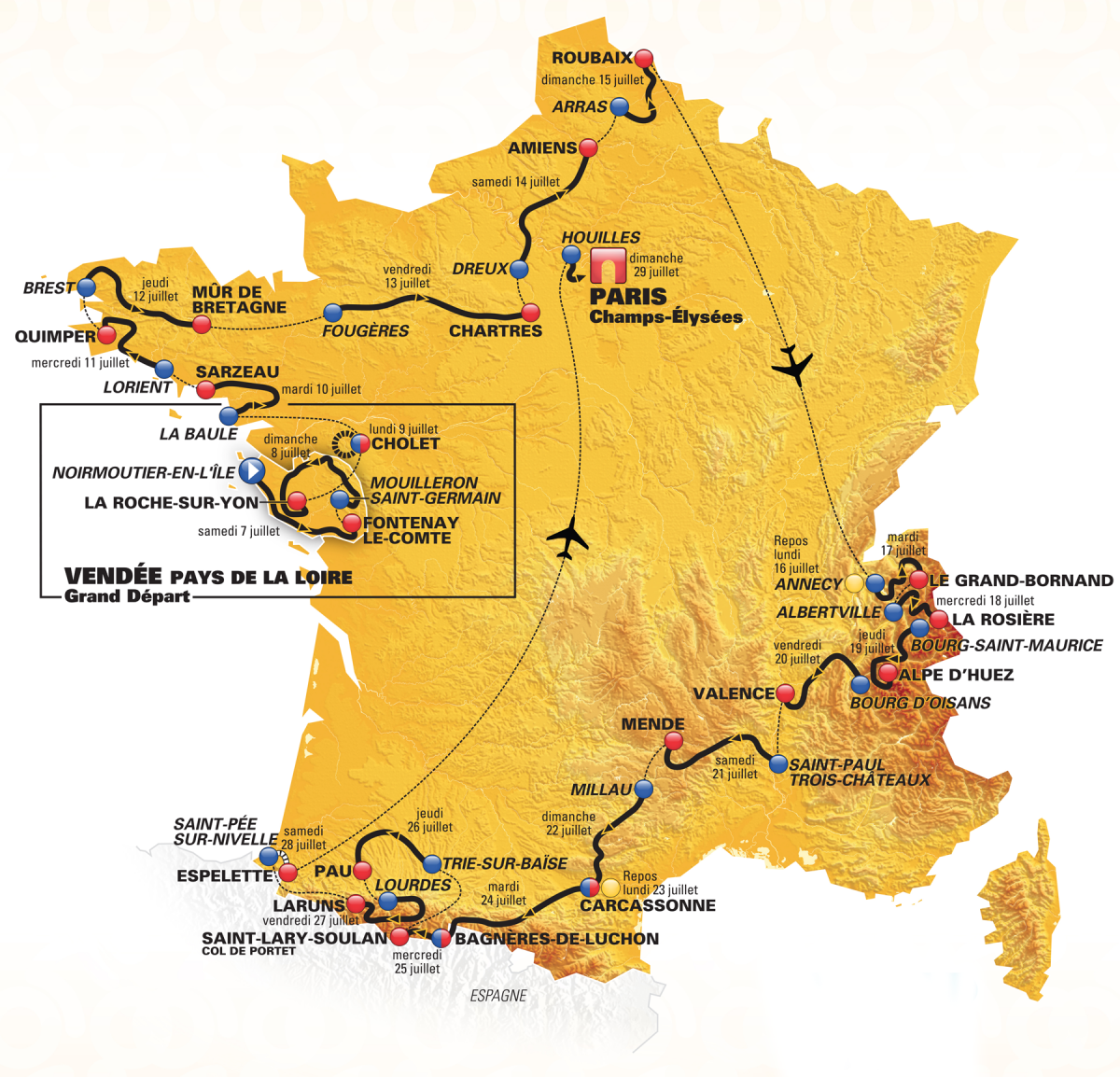
Route of the 104th edition of the Tour de France – 2017
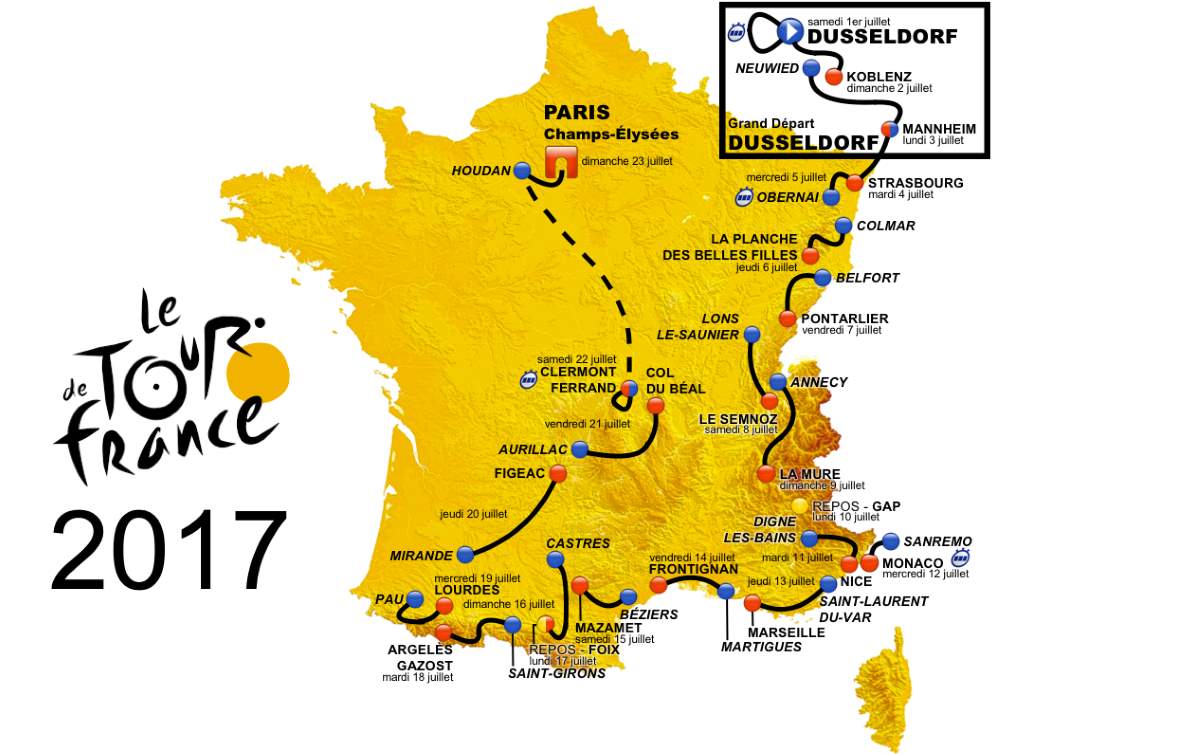
Route of the 103rd edition of the Tour de France – 2016

Route of the 102nd edition of the Tour de France – 2015
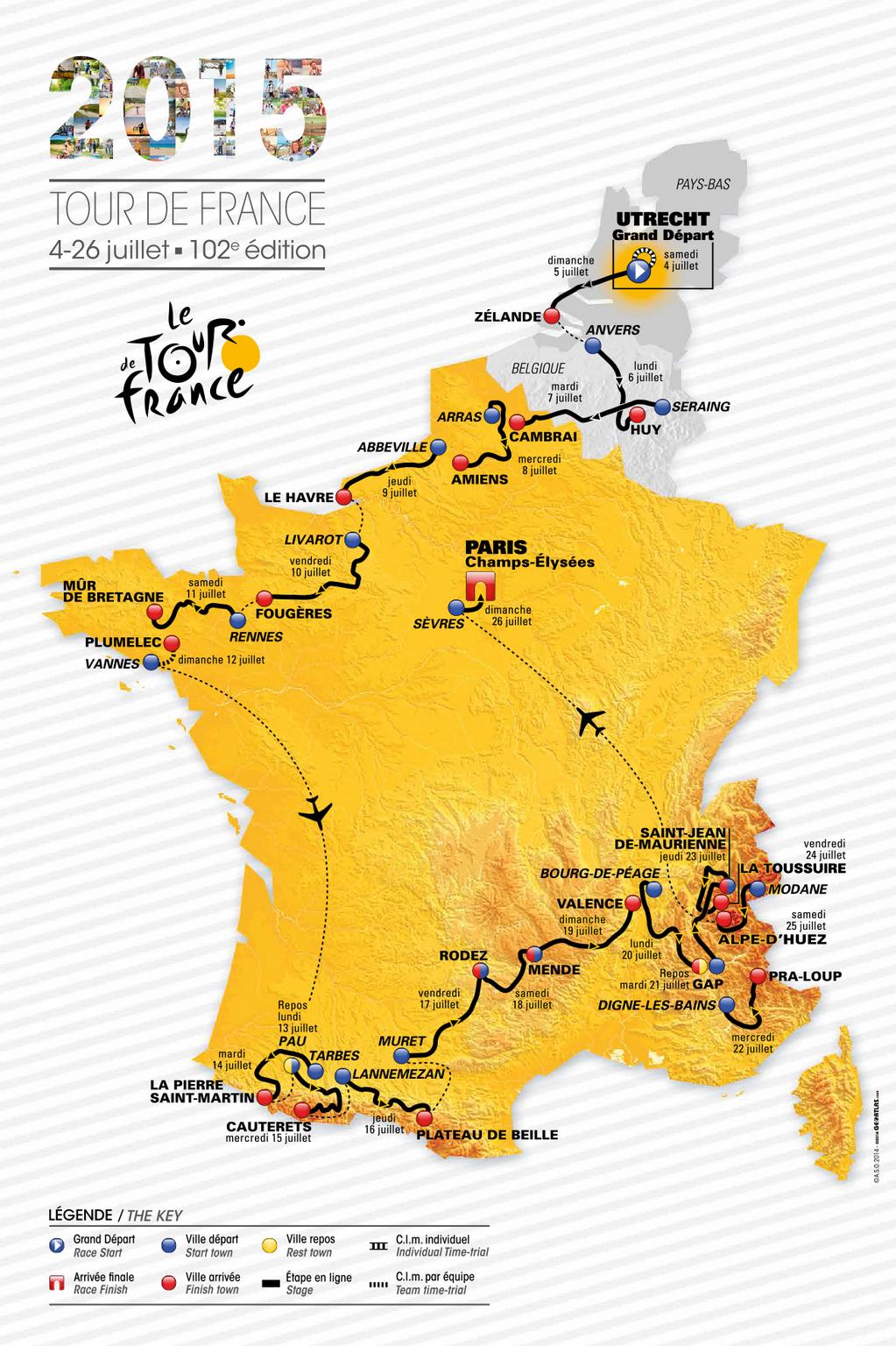
On July 4, 2015, the 102nd edition of the Tour de France started in Utrecht, the Netherlands. Although the country shares no direct border with France, it was the sixth time the race had started there after 1954 (Amsterdam), 1973 (Scheveningen), 1978 (Leiden), 1996 (‘s-Hertogenbosch), and 2010 (Rotterdam).
The Tour de France included flat stages in the Netherlands, Belgium and Northern France, mountain stages in the Pyrenees and the French Alps, and Medium-mountain stages in the South of France between the départements of Haute-Garonne and Drôme.
The finish took place on Sunday, July 26th, in the Champs-Élysées, after a flat stage (107 km) between Sèvres and Paris.
Route of the 101st edition of the Tour de France – 2014
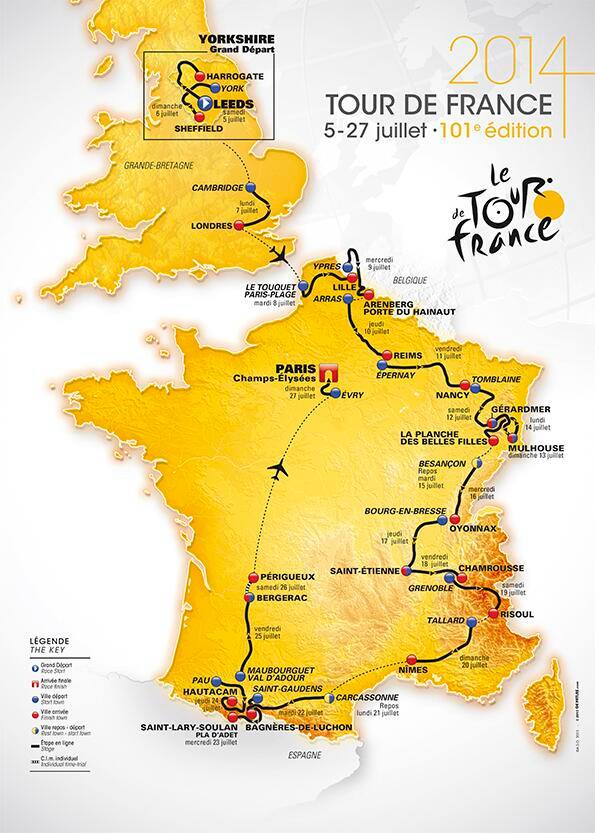
In 2014, the 101st edition of the Tour de France started in Leeds, England, on July 5th and passed through London before arriving in France on July 8th.
The 2014 race included 21 stages covering a total of 3,656 kilometres (2,272 miles) and crisscrossed the eastern regions of France and Belgium, particularly Ypres, Picardy, Lorraine, and Alsace, which were severely marked by the WWI fightings.
For the first time in the Tour de France’s history, the finish at the Champs-Élysées in Paris (27 July) featured a race called ‘La Course by le Tour de France’ with female riders.
Route of the 100th edition of the Tour de France – 2013
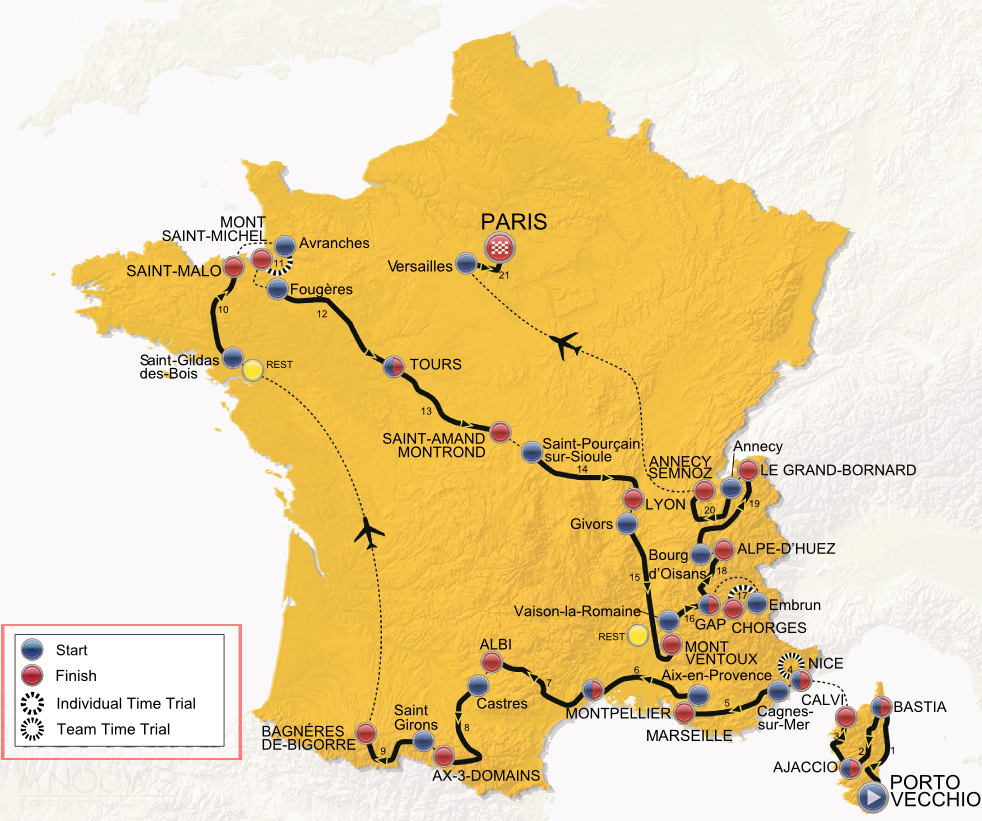
In 2013, the Tour de France celebrated its 100th edition. For the first time in the history of the race, the island of Corsica was visited during 3 stages.
Unlike other previous races, this edition took place entirely in France. The 2013 race included 21 stages covering a total of 3,403 kilometres (2,115 miles) and visited some of France’s most famous sites and landmarks such as Mont Saint-Michel, the walled town of Saint-Malo, the city of Lyon, Alpe d’Huez in the Alps (a double ascent), Nice and the Baie des Anges, the episcopal city of Albi, the châteaux of the Loire Valley and the palace of Versailles.
For the first time, a nighttime finish took place at the Champs-Élysées in Paris.
The winner of the 100th edition of the race in 2013 was Chris Froome (GBR) from Team Sky.
Route of the 99th edition of the Tour de France – 2012
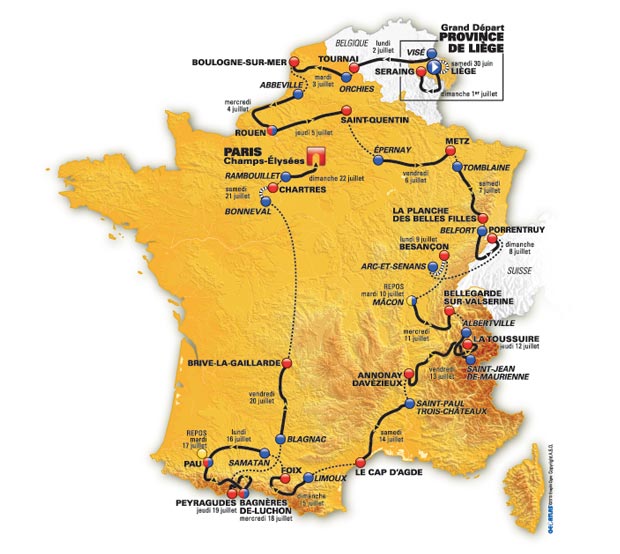
The 99th edition of the Tour de France, which started in Liège, Belgium, in 2012, included a visit to Switzerland at Porrentruy.
Riding mostly in the eastern regions of France (Champagne, Lorraine, Alsace, Franche-Comté, Rhône-Alpes and Provence-Alpes-Côte d’Azur), the riders travelled across the Vosges, the Jura, the Alps and the Pyrenees in 21 stages, covering a total of 3,496 km (2,173 miles).
The winner of the 99th edition of the Tour de France in 2012 was Bradley Wiggins (GBR) from Team Sky.
The Tour de France in Europe
![Tour de France 2007 in London © Steve F - licence [CC BY-SA 2.0] from Wikimedia Commons](https://frenchmoments.eu/wp-content/uploads/2014/05/Tour-de-France-2007-in-London-©-Steve-F-.jpg-licence-CC-BY-SA-2.0-from-Wikimedia-Commons.jpg)
Although the bicycle race is mainly held in France, it has visited neighbouring countries many times since its creation in 1903.
The following European states have hosted a stage or part of a stage since the 1950s: Andorra, Belgium, England, Germany, Ireland, Italy, Luxembourg, Monaco, the Netherlands, Spain and Switzerland.
Since 1954, the starts outside France have included the following cities and countries:
- 1954 Amsterdam, the Netherlands
- 1958 Brussels, Belgium
- 1965 Cologne, Germany
- 1973 Scheveningen, the Netherlands
- 1975 Charleroi, Belgium
- 1978 Leiden, Netherlands
- 1980 Frankfurt, Germany
- 1982 Basel, Switzerland
- 1987 West Berlin, West Germany
- 1989 Luxembourg
- 1992 San Sebastián, Spain
- 1996 ‘s-Hertogenbosch, the Netherlands
- 1998 Dublin, Republic of Ireland
- 2002 Luxembourg
- 2004 Liège, Belgium
- 2007 London, United Kingdom
- 2009 Monte Carlo, Monaco
- 2010 Rotterdam, the Netherlands
- 2012 Liège, Belgium
- 2014 Leeds, United Kingdom
- 2015 Utrecht, The Netherlands
- 2017 Düsseldorf, Germany
- 2024 Florence, Italy
English-French Vocabulary
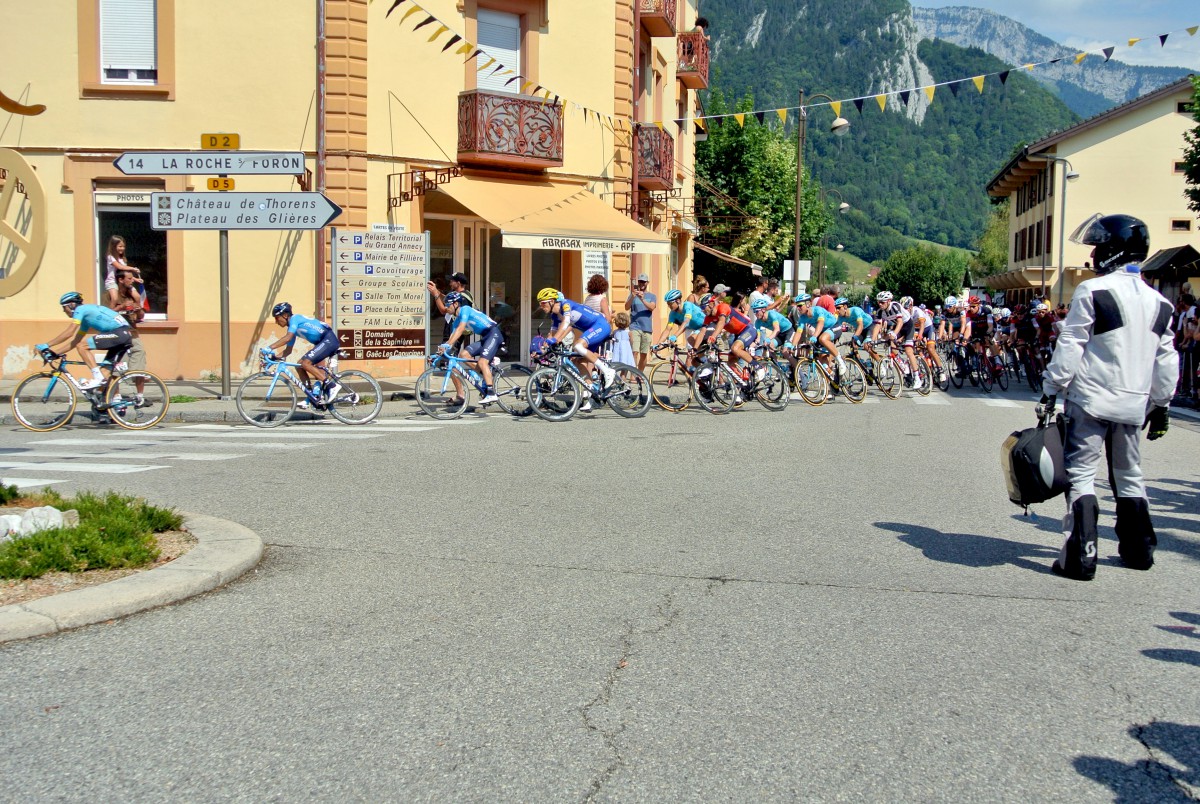
(f) for féminin, (m) for masculin, (adj) for adjective and (v) for verbs
- advertising caravan = caravane publicitaire (f)
- against the clock = contre la montre (m)
- Alps = Alpes (f,p)
- bicycle = bicyclette (f), vélo (m)
- distance = distance (f)
- finish line = ligne d’arrivée (f)
- green jersey = maillot vert (m)
- individual time trial = contre la montre individuel (m)
- jersey = maillot (m)
- mountain = montagne (f)
- pass = col (m)
- podium = podium (m)
- polka-dot jersey = maillot à pois rouges (m)
- Pyrenees = Pyrénées (f,p)
- race = course (f)
- rider = coureur (m)
- road = route (f)
- route = route (f)
- sport = sport (m)
- stage = étape (f)
- start = départ (m)
- team time trial = contre la montre par équipe (m)
- white jersey = maillot blanc (m)
- winner = vainqueur (m)
- yellow jersey = maillot jaune (m)




